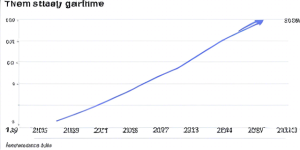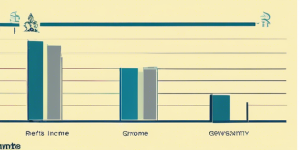
As you approach your golden years, securing a steady stream of income becomes an increasingly important consideration. One financial instrument that has gained popularity among retirees is an annuity. In this comprehensive guide, we’ll explore the world of annuities, their advantages, and how they can benefit seniors over the age of 60.
What is an Annuity?
An annuity is a financial product that provides a guaranteed stream of income, either for a specific period of time or for the remainder of your life. It is essentially a contract between you and an insurance company, where you make a lump-sum payment or a series of payments, and in return, the insurance company agrees to pay you a fixed amount of money on a regular basis, such as monthly or annually.
Types of Annuities
There are several types of annuities available, each designed to cater to different financial goals and risk tolerances. The two main categories are:
1. Immediate Annuities
An immediate annuity is a type of annuity that begins paying out income immediately after you make your lump-sum payment. This option is particularly attractive for seniors who require a steady income stream right away.
2. Deferred Annuities
A deferred annuity, on the other hand, allows you to accumulate funds over time before you start receiving payments. This option is generally more suitable for individuals who are still working and want to build up their retirement savings.
Within these two broad categories, there are several variations, including:
- Fixed Annuities: These annuities offer a guaranteed rate of return, providing a predictable income stream.
- Variable Annuities: Variable annuities are tied to the performance of underlying investments, such as mutual funds, offering the potential for higher returns but also exposing you to market risks.
- Indexed Annuities: These annuities are linked to a specific market index, such as the S&P 500, and provide returns based on the index’s performance, subject to certain limits and caps.
Why Consider an Annuity as a Senior?

As you enter your retirement years, an annuity can offer several advantages that make it an attractive option for seniors over 60:
1. Guaranteed Income for Life
One of the primary benefits of an annuity is the guarantee of a steady income stream for life. This can provide peace of mind and financial security, alleviating concerns about outliving your retirement savings.
2. Protection Against Market Volatility
With a fixed annuity, your income payments are not affected by market fluctuations, offering a stable source of income during times of economic uncertainty.
3. Tax-Deferred Growth
Deferred annuities allow your money to grow tax-deferred, potentially resulting in higher returns compared to taxable investments.
4. Estate Planning Benefits
Annuities can be structured to provide income for your spouse or beneficiaries after your passing, ensuring that your loved ones are taken care of financially.
Factors to Consider When Choosing an Annuity
While annuities offer several advantages, it’s essential to carefully evaluate your personal circumstances and financial goals before making a decision. Here are some key factors to consider:
1. Age and Life Expectancy
Your age and life expectancy play a crucial role in determining the type of annuity that best suits your needs. Immediate annuities may be more suitable for seniors who require income right away, while deferred annuities could be a better choice for those with a longer time horizon.
2. Retirement Income Needs
Assess your anticipated retirement expenses, including healthcare costs, housing, and lifestyle expenses, to determine the amount of income you’ll need from an annuity.
3. Existing Retirement Savings
Consider your existing retirement savings, such as 401(k) plans, IRAs, and other investments, to ensure that an annuity complements your overall financial plan.
4. Inflation Protection
Some annuities offer inflation protection, which can help maintain your purchasing power over time. This feature may be particularly important for seniors with longer life expectancies.
5. Fees and Expenses
Annuities can come with various fees and expenses, such as surrender charges, mortality and expense risk charges, and investment management fees. It’s crucial to understand and factor in these costs when evaluating annuity options.
Shopping for the Right Annuity

When shopping for an annuity, it’s essential to work with a reputable insurance company and consider factors such as financial strength ratings, customer service, and the company’s track record. Additionally, consult with a qualified financial advisor who can help you navigate the complexities of annuities and ensure that your decision aligns with your overall retirement plan.
Conclusion
As a senior over 60, an annuity can provide a valuable source of guaranteed income during your retirement years. By understanding the different types of annuities, their benefits, and the factors to consider, you can make an informed decision that aligns with your financial goals and risk tolerance. Remember, an annuity is a long-term commitment, so it’s essential to carefully evaluate your options and seek professional guidance to ensure a secure and comfortable retirement.
FAQs: The Ultimate Guide to Annuities for Seniors Over 60
- Can I withdraw money from my annuity if I need it? While annuities are designed to provide a steady income stream, some options do allow for partial withdrawals or lump-sum payouts, often subject to surrender charges or taxes. It’s important to review the terms and conditions of your annuity contract carefully.
- What happens to my annuity if I pass away? The specifics depend on the type of annuity and the options you choose. Some annuities provide a guaranteed payout period or allow for the remaining value to be paid to your beneficiaries upon your passing.
- Can I roll over my 401(k) or IRA into an annuity? Yes, it is possible to use funds from your 401(k) or IRA to purchase an annuity. This process is known as a rollover, and it can be a tax-efficient way to convert your retirement savings into a steady income stream.
- Are annuity payments taxable? A portion of your annuity payments may be subject to income tax, depending on the type of annuity and the source of funds used to purchase it. It’s essential to consult with a tax professional to understand the tax implications of your annuity.
- Can I purchase an annuity with a lump sum or through periodic payments? Both options are available. You can either make a single lump-sum payment or contribute funds periodically over time, depending on the type of annuity and your financial situation.
Introduction

Investing in an annuity can be a wise financial decision, offering a stream of income during retirement years. However, understanding the tax implications of annuities is crucial to maximizing their benefits. In this article, we’ll delve into the intricate world of annuity tax benefits, exploring the various types of annuities, their taxation rules, and strategies to optimize your financial planning.
What is an Annuity?
An annuity is a financial product that provides a guaranteed income stream, either for a specific period or for the remainder of your life. It is essentially a contract between you and an insurance company, where you make an initial lump-sum payment or a series of payments, and the company agrees to pay you a regular income stream in return.
There are two main types of annuities:
- Qualified Annuities Qualified annuities are funded with pre-tax dollars, typically through a retirement account such as an IRA (Individual Retirement Account) or an employer-sponsored plan like a 401(k). These annuities offer tax-deferred growth, meaning you don’t pay taxes on the investment gains until you start receiving income payments.
- Non-Qualified Annuities Non-qualified annuities, on the other hand, are funded with after-tax dollars. While they don’t provide an upfront tax deduction, a portion of each income payment is considered a return of your original investment and is therefore tax-free.
Tax Benefits of Annuities
Tax-Deferred Growth One of the most significant advantages of annuities is the tax-deferred growth potential. Unlike regular taxable investments, where you pay taxes on any gains each year, the money within an annuity grows tax-deferred until you begin taking withdrawals. This allows your investments to compound more efficiently, potentially resulting in a larger nest egg for retirement.
Partial Tax-Free Income With non-qualified annuities, a portion of each income payment is considered a return of your initial investment and is therefore tax-free. This feature can provide a valuable source of tax-efficient income during retirement.
Potential for Lower Tax Rates Annuity income is typically taxed as ordinary income, which may be advantageous if you expect to be in a lower tax bracket during retirement than you were during your working years.
Taxation of Annuity Withdrawals

Qualified Annuities Withdrawals from qualified annuities are taxed as ordinary income in the year they are received. This includes both the principal and the accumulated earnings. Early withdrawals before age 59½ may also be subject to a 10% penalty tax, unless an exception applies.
Non-Qualified Annuities With non-qualified annuities, each payment is divided into two parts: a tax-free portion representing the return of your initial investment, and a taxable portion representing the earnings. The taxable portion is subject to ordinary income tax rates.
Strategies to Optimize Annuity Tax Benefits
Ladder Your Annuities Consider laddering your annuities by staggering the purchase dates. This strategy can provide you with a steady stream of income payments over time, allowing you to manage your tax liability more effectively.
Delay Taking Distributions If possible, delay taking distributions from your annuity until you reach a lower tax bracket in retirement. This can help minimize the tax impact on your annuity income.
Utilize Spousal Annuities For married couples, considering a spousal annuity can be advantageous. By naming your spouse as the primary beneficiary, the annuity can continue to provide tax-deferred growth and income after your passing.
Conclusion
Understanding the tax benefits of annuities is crucial for effective retirement planning. By leveraging the tax-deferred growth potential, partial tax-free income, and potential for lower tax rates, annuities can provide a valuable source of income during your golden years. However, it’s essential to consult with a qualified financial advisor to ensure you’re making the most of these tax advantages while aligning your investment strategy with your overall financial goals.
FAQs
1. Are annuity withdrawals subject to the 3.8% Medicare surtax? Yes, annuity withdrawals that are considered taxable income may be subject to the 3.8% Medicare surtax if your modified adjusted gross income exceeds certain thresholds ($200,000 for single filers, $250,000 for married couples filing jointly).
2. Can I roll over an annuity from one company to another without paying taxes? Yes, you can typically transfer or roll over an annuity from one company to another without triggering immediate taxation, as long as you follow the proper procedures and adhere to the IRS rules for tax-free transfers.
3. Are annuity distributions taxed at the same rate as other types of retirement income? Annuity distributions are generally taxed as ordinary income, similar to other types of retirement income such as pension payments or traditional IRA withdrawals. However, the tax rates may vary depending on your overall taxable income and tax bracket.
4. Can I take a lump-sum withdrawal from my annuity without penalty? In most cases, you can take a lump-sum withdrawal from your annuity, but there may be surrender charges or penalties imposed by the insurance company, particularly if you withdraw funds early. Additionally, the entire lump-sum withdrawal may be subject to ordinary income tax.
5. Are there any estate tax implications for annuities? Annuities can have estate tax implications, depending on the type of annuity and the beneficiary designations. It’s essential to consult with a qualified estate planning professional to understand the potential tax consequences and develop a strategy to minimize estate taxes.
]]>
Hey there, my friend! If you’re a high-income earner, you know the drill – Uncle Sam always wants his slice of the pie. But what if I told you there are ways to keep more of your hard-earned cash? That’s right, we’re talking about tax-efficient investing strategies that can help you legally minimize your tax burden and maximize your returns. So, buckle up, and let’s dive into the world of savvy investing for those with a heftier paycheck.
Understanding the Tax Implications for High Income Earners
Before we get into the nitty-gritty of tax-efficient investing strategies, let’s first understand why they’re crucial for high-income earners like yourself.
The Tax Bite: Why High Earners Pay More
As your income rises, so does your tax rate. It’s the harsh reality of progressive taxation systems like the one we have in the United States. According to the Internal Revenue Service (IRS), individuals with a taxable income of $578,125 or more (for single filers) or $693,750 or more (for married couples filing jointly) fall into the highest tax bracket of 37% for the 2023 tax year.
That’s a significant chunk of your earnings going straight to the government. And if you’re not careful, those tax bills can quickly eat into your long-term wealth-building plans.
The Importance of Tax Efficiency for Long-Term Growth
When you’re investing for the long haul, the effects of taxes can be amplified over time. Even a few percentage points in tax savings can translate into substantial differences in your portfolio’s growth trajectory. That’s why implementing tax-efficient investing strategies is crucial for high-income earners – it allows you to keep more of your gains working for you, compounding over the years and potentially setting you up for a more comfortable retirement or financial freedom down the line.
Tax-Advantaged Accounts: Your Best Friends for Tax Efficiency
One of the most effective ways to minimize your tax burden is by taking advantage of tax-advantaged accounts. These accounts offer various tax benefits that can help you grow your investments more efficiently.
401(k) and Other Employer-Sponsored Retirement Plans
If your employer offers a 401(k) or similar retirement plan, it’s a no-brainer to participate. These plans allow you to contribute pre-tax dollars, lowering your taxable income for the year. Your investments can then grow tax-deferred until you start taking withdrawals in retirement, when you may be in a lower tax bracket.
But the benefits don’t stop there. Many employers offer matching contributions, which is essentially free money that can turbocharge your retirement savings. It’s like getting a guaranteed return on your investment right from the get-go!
Traditional and Roth IRAs: Retirement Accounts with Tax Perks
Individual Retirement Accounts (IRAs) are another powerful tool in your tax-efficient investing arsenal. With traditional IRAs, your contributions are tax-deductible, allowing you to lower your taxable income today while enjoying tax-deferred growth until retirement.
On the other hand, Roth IRAs offer tax-free growth and withdrawals in retirement, as long as you meet certain conditions. While you don’t get an upfront tax deduction, the ability to take out your gains tax-free can be a game-changer, especially for high-income earners who expect to be in a higher tax bracket during retirement.
Health Savings Accounts (HSAs): Triple Tax Advantage

If you’re enrolled in a high-deductible health plan, don’t overlook the power of a Health Savings Account (HSA). Contributions to an HSA are tax-deductible, your investments grow tax-deferred, and withdrawals for qualified medical expenses are tax-free – a triple tax advantage!
Not only can an HSA help you save for future healthcare costs, but it can also serve as a complementary retirement savings vehicle, making it an invaluable tool for tax-efficient investing.
Invest for the Long Haul: Maximizing Tax Efficiency with Asset Location
While tax-advantaged accounts are a crucial component of tax-efficient investing, they’re not the only piece of the puzzle. The way you allocate your assets across different account types can also significantly impact your tax bill.
The Power of Asset Location
Asset location is the strategic placement of your investments in taxable and tax-advantaged accounts to maximize tax efficiency. For example, you might want to hold tax-inefficient investments, like bonds or high-turnover funds, in tax-advantaged accounts like IRAs or 401(k)s. Meanwhile, more tax-efficient assets, such as index funds or stocks held for the long term, can be held in taxable accounts.
By carefully considering the tax implications of each investment and allocating them accordingly, you can minimize the drag of taxes on your overall portfolio returns.
Holding Investments for the Long Term
One of the most powerful tax-efficient investing strategies is to hold your investments for the long term, especially in taxable accounts. When you sell an investment you’ve held for more than a year, any gains are taxed at the lower long-term capital gains rate, which can be significantly lower than the ordinary income tax rate you’d pay on short-term gains.
For high-income earners, this strategy can provide substantial tax savings, allowing you to keep more of your investment gains working for you.
Tax-Loss Harvesting: Turning Losses into Gains
Even with a well-diversified portfolio, losses are sometimes inevitable. However, through a process called tax-loss harvesting, you can turn those losses into a silver lining. By selling investments at a loss, you can offset capital gains or up to $3,000 of ordinary income each year, effectively reducing your tax burden.
Tax-loss harvesting can be a powerful tool for high-income earners, especially in turbulent markets when investment losses may be more prevalent.
Charitable Giving and Tax-Efficient Investing

If philanthropy is important to you, you can incorporate charitable giving into your tax-efficient investing strategy to potentially reduce your tax liability while supporting causes you care about.
Donating Appreciated Securities
Instead of selling appreciated securities and paying capital gains taxes, consider donating them directly to a qualified charity. By doing so, you can potentially deduct the full fair market value of the securities, avoiding capital gains taxes altogether.
This strategy is particularly beneficial for high-income earners who itemize deductions and hold highly appreciated investments in taxable accounts.
Donor-Advised Funds: Flexibility and Tax Benefits
Donor-advised funds (DAFs) offer a tax-efficient way to support charitable causes while potentially enjoying immediate tax benefits. With a DAF, you can contribute cash, securities, or other assets and claim an immediate tax deduction. The funds are then invested and distributed to qualified charities of your choice at a later time.
DAFs provide flexibility in your charitable giving, allowing you to front-load your donations and potentially maximize tax benefits in high-income years while spreading out your charitable distributions over time.
Estate Planning and Tax-Efficient Investing
For high-income earners with significant wealth, estate planning is a critical component of a tax-efficient investing strategy. By proactively addressing potential estate tax liabilities, you can ensure that more of your hard-earned wealth is passed on to your loved ones or charitable causes.
Trusts and Estate Tax Planning
Trusts can be powerful tools for estate tax planning and wealth preservation. By transferring assets into various types of trusts, such as revocable living trusts or irrevocable trusts, you may be able to remove those assets from your taxable estate, potentially reducing or eliminating estate tax liabilities.
However, trusts can be complex legal structures, and their tax implications can vary greatly. It’s essential to work with qualified estate planning professionals to ensure your trusts are set up and administered correctly.
Philanthropy and Legacy Planning
For those with a strong philanthropic inclination, incorporating charitable giving into your estate plan can be a tax-efficient way to leave a lasting legacy. Strategies like charitable remainder trusts or charitable lead trusts can provide tax benefits while supporting causes you care about.

Professional Guidance: When to Seek Expert Advice
While tax-efficient investing strategies can help you keep more of your hard-earned money, navigating the complex world of taxes and investments can be daunting. That’s why it’s often wise to seek professional guidance, especially for high-income earners with significant assets and unique financial situations.
When to Consult a Financial Advisor
A qualified financial advisor can provide invaluable insights and guidance on tax-efficient investing strategies tailored to your specific goals, risk tolerance, and financial circumstances. They can help you develop a comprehensive investment plan that incorporates tax-advantaged accounts, asset location strategies, and other tax-minimization techniques.
Additionally, financial advisors can assist with ongoing portfolio management, rebalancing, and tax-loss harvesting, ensuring your investments remain aligned with your tax-efficient investing strategies over time.
The Role of Tax Professionals
While financial advisors can provide valuable investment guidance, it’s also essential to work with qualified tax professionals, such as certified public accountants (CPAs) or enrolled agents. These experts can help you navigate the intricacies of tax laws, identify potential deductions and credits, and ensure you’re taking full advantage of tax-efficient investing strategies specific to your situation.
Tax professionals can also provide guidance on estate planning, charitable giving, and other tax-related matters that may impact your overall financial strategy.
Conclusion
As a high-income earner, implementing tax-efficient investing strategies is crucial to maximizing your long-term wealth-building potential. By taking advantage of tax-advantaged accounts, strategically allocating assets, holding investments for the long term, and incorporating charitable giving and estate planning into your overall strategy, you can potentially minimize your tax burden and keep more of your hard-earned money working for you.
Remember, tax-efficient investing is not a one-size-fits-all approach – it requires careful planning and consideration of your unique financial situation. Don’t hesitate to seek guidance from qualified financial and tax professionals, as their expertise can be invaluable in navigating the complexities of tax-efficient investing.
By taking a proactive and informed approach to your investments, you can not only secure your financial future but also potentially leave a lasting legacy for your loved ones or the causes you care about most.
FAQs (Frequently Asked Questions)
Q1: What is the difference between tax avoidance and tax evasion?
A1: Tax avoidance refers to legal strategies and techniques used to minimize your tax liabilities within the confines of the law. Tax-efficient investing strategies, such as utilizing tax-advantaged accounts or taking advantage of deductions and credits, fall under this category. On the other hand, tax evasion involves illegally hiding or misrepresenting income or assets to avoid paying taxes, which is a criminal offense.
Q2: How do I determine if I should contribute to a traditional or Roth IRA?
A2: The decision between a traditional or Roth IRA depends on your current income level and expected income in retirement. If you anticipate being in a lower tax bracket during retirement, a traditional IRA may be more beneficial, as you can take the upfront tax deduction and pay taxes on withdrawals when you’re in a lower bracket. Conversely, if you expect to be in a higher tax bracket in retirement, a Roth IRA may be more advantageous, as you pay taxes upfront but enjoy tax-free withdrawals later on.
Q3: Can I contribute to both a 401(k) and an IRA in the same year?
A3: Yes, you can contribute to both a 401(k) and an IRA in the same year, as long as you meet the eligibility requirements for each account. However, there are contribution limits for each type of account, and your ability to deduct traditional IRA contributions may be limited based on your income and participation in an employer-sponsored retirement plan.
Q4: What is the benefit of donating appreciated securities to charity?
A4: When you donate appreciated securities (such as stocks or mutual funds) directly to a qualified charity, you can potentially deduct the full fair market value of the securities from your taxable income, while avoiding capital gains taxes on the appreciation. This can be a more tax-efficient way to support charitable causes compared to selling the securities and donating the proceeds.
Q5: Should I prioritize tax-efficient investing strategies over investment returns?
A5: While tax-efficient investing strategies are important, they should not be the sole consideration when making investment decisions. Your primary focus should be on achieving your long-term financial goals and maintaining a well-diversified portfolio aligned with your risk tolerance and investment horizon. Tax efficiency should be a complementary consideration to help you maximize your overall returns and minimize unnecessary tax liabilities.
]]>
The Allure of Investing in Farmland and Agriculture
As investors seek diversification and long-term stability, the agricultural sector has emerged as an enticing prospect. Investing in farmland and agriculture offers a unique opportunity to tap into a fundamental human need – food production. With the world’s population continuing to grow, the demand for agricultural products is expected to rise steadily, making this industry an attractive choice for those seeking steady returns.
Understanding the Fundamentals of Farmland Investing
Before delving into the intricacies of investing in farmland and agriculture, it’s essential to grasp the core principles that underpin this asset class. Farmland is a tangible asset rooted in the earth, providing a sense of security that resonates with many investors. Unlike stocks or bonds, which can be subject to market volatility, farmland has an inherent value tied to its ability to produce crops and sustain agricultural operations.
The Timeless Appeal of Agricultural Investments
Investing in agriculture is not a new concept; it has been a cornerstone of human civilization for centuries. Throughout history, civilizations have thrived or faltered based on their ability to cultivate and harness the bounty of the land. In modern times, this age-old industry has evolved into a sophisticated and diverse sector, encompassing everything from crop production and livestock farming to agribusiness and food processing.
Factors Driving the Growth of Farmland Investing
Global Population Growth and Increasing Food Demand
One of the primary drivers behind the appeal of investing in farmland and agriculture is the relentless growth of the global population. As the world’s population continues to expand, the demand for food and agricultural products rises in tandem. This ever-increasing demand creates a fertile ground for investment opportunities in the agricultural sector.
According to the United Nations, the global population is projected to reach 8.5 billion by 2030 and nearly 10 billion by 2050. With more mouths to feed, the pressure on agricultural production intensifies, necessitating more efficient farming practices and increased investment in the sector.
Urbanization and the Shrinking Availability of Arable Land
As cities continue to expand and urbanization accelerates, the amount of arable land available for agricultural production is decreasing. This scarcity of farmland, coupled with the growing demand for food, creates a supply-demand imbalance that drives up the value of existing agricultural land.
Investors who acquire farmland strategically position themselves to benefit from this trend, as the limited supply of arable land increases the value of their holdings over time.
Climate Change and Environmental Concerns

The impact of climate change on agriculture cannot be ignored. Rising temperatures, shifting weather patterns, and the increasing frequency of extreme weather events pose significant challenges to crop yields and livestock production. However, these challenges also present opportunities for innovation and investment in sustainable agricultural practices.
Investors who prioritize environmentally responsible farming methods and technologies can potentially mitigate risks associated with climate change while capitalizing on the growing demand for sustainable food production.
Investment Opportunities in Farmland and Agriculture
Direct Ownership of Farmland
One of the most straightforward ways to invest in farmland and agriculture is through direct ownership of agricultural land. This approach involves acquiring and managing farmland directly, either for personal use or as an investment property. Direct ownership offers investors complete control over the land and its operations, allowing them to make decisions regarding crop selection, farming methods, and potential diversification into ancillary businesses like agritourism or renewable energy production.
However, direct ownership also comes with significant responsibilities, such as managing labor, equipment, and crop yields, as well as navigating legal and regulatory requirements. For those without prior experience in agriculture, partnering with experienced farm managers or leasing the land to established farming operators may be a more practical approach.
Agricultural Real Estate Investment Trusts (REITs)
For investors seeking a more hands-off approach, Agricultural Real Estate Investment Trusts (REITs) provide an attractive opportunity. REITs are companies that own and operate income-producing real estate, including farmland and agricultural properties. By investing in these publicly traded REITs, individuals can gain exposure to a diversified portfolio of farmland assets without the responsibilities associated with direct ownership.
Agricultural REITs offer several benefits, such as professional management, diversification across multiple properties and geographic regions, and the potential for regular income distributions from rental payments or crop sales. However, it’s important to carefully evaluate the track record, management team, and underlying assets of any REIT before investing.
Farmland Investment Funds and Partnerships
Another popular investment vehicle in the agricultural sector is farmland investment funds and partnerships. These entities pool capital from multiple investors and use the collective resources to acquire and manage farmland properties. Investors become limited partners, benefiting from the expertise of professional fund managers and the diversification of owning a stake in multiple agricultural assets.
Farmland investment funds and partnerships often have a specific investment strategy, such as targeting certain crop types, regions, or farming practices. This focused approach allows investors to align their investments with their personal preferences or risk tolerance levels.
Agricultural Commodities and Futures
While not a direct investment in farmland, trading in agricultural commodities and futures can provide exposure to the agricultural sector. Commodities like corn, wheat, soybeans, and livestock are widely traded on futures exchanges, allowing investors to speculate on price movements or hedge against potential risks.
Investing in agricultural commodities and futures requires a thorough understanding of market dynamics, supply and demand factors, and the intricacies of futures trading. It’s often considered a more speculative approach compared to direct farmland ownership or investment in REITs and funds.
Evaluating the Risks and Rewards of Farmland Investing
Potential Risks and Challenges
Like any investment opportunity, investing in farmland and agriculture comes with its fair share of risks and challenges. Some of the key factors to consider include:
- Weather and Climate Risks: Agricultural operations are inherently vulnerable to adverse weather conditions, such as droughts, floods, or extreme temperatures, which can significantly impact crop yields and livestock production.
- Regulatory and Policy Changes: The agricultural sector is subject to various regulations and policies related to land use, environmental protection, labor practices, and trade agreements. Changes in these areas can impact the profitability and operational dynamics of farmland investments.
- Commodity Price Volatility: The prices of agricultural commodities can fluctuate due to factors like supply and demand imbalances, global trade dynamics, and geopolitical tensions. This volatility can directly affect the returns from farmland investments.
- Operating Costs and Labor Availability: The costs associated with farming operations, including labor, equipment, and inputs like fertilizers and pesticides, can significantly impact profitability. Securing a reliable and affordable labor force is also an ongoing challenge in many agricultural regions.
Mitigating Risks through Diversification and Due Diligence

While the risks associated with farmland investing are real, they can be mitigated through proper diversification and thorough due diligence. Diversifying across multiple crop types, geographic regions, and investment vehicles can help reduce exposure to any single risk factor. Additionally, conducting comprehensive research on potential investments, including evaluating soil quality, water resources, and management teams, can help investors make informed decisions.
It’s also crucial to have a long-term investment horizon when it comes to farmland and agriculture. These assets tend to appreciate in value over extended periods, making them suitable for patient investors seeking steady returns and potential capital appreciation.
The Role of Technology in Modern Farming
Precision Agriculture and Data-Driven Farming
The integration of technology into modern farming practices has revolutionized the agricultural sector. Precision agriculture, which involves the use of advanced technologies like GPS, remote sensing, and data analytics, has enabled farmers to optimize crop yields, reduce input costs, and minimize environmental impact.
By leveraging data-driven insights, farmers can make informed decisions about planting, irrigation, fertilization, and pest management, resulting in more efficient and sustainable farming practices. This technological advancement not only enhances profitability but also aligns with the growing demand for environmentally responsible agricultural practices.
Sustainable Farming Practices and Renewable Energy
In addition to precision agriculture, the adoption of sustainable farming practices and renewable energy sources is gaining traction in the agricultural sector. These initiatives not only contribute to environmental conservation but also offer potential cost savings and revenue diversification opportunities for farmland investors.
Sustainable farming practices, such as crop rotation, cover cropping, and integrated pest management, can improve soil health, reduce erosion, and minimize the need for synthetic inputs. Furthermore, the integration of renewable energy sources like solar or wind power can help offset energy costs and potentially generate additional revenue streams through the sale of excess energy.
Agribusiness and Food Technology Innovations
Beyond traditional crop and livestock production, the agricultural sector encompasses a vast array of agribusiness and food technology innovations. From vertical farming and indoor agriculture to plant-based protein alternatives and food waste reduction technologies, these advancements offer new investment opportunities and potential for disruptive growth.
Investors with a keen eye for innovation and a willingness to explore emerging trends can position themselves at the forefront of these exciting developments, potentially capitalizing on the evolving consumer preferences and market dynamics shaping the future of food production and distribution.
The Global Landscape of Farmland Investing
Regional Opportunities and Considerations
Farmland investing opportunities exist across the globe, each region presenting its unique set of advantages and challenges. For example, regions like the United States, Canada, and Australia offer established agricultural sectors, favorable regulatory environments, and robust infrastructure. However, these markets may also come with higher land prices and competition for prime farmland.
Conversely, emerging markets in regions like South America, Africa, and parts of Asia offer potentially lower entry costs and untapped growth potential. However, these regions may also face challenges related to political stability, infrastructure development, and regulatory frameworks.
Thorough research and due diligence are crucial when evaluating farmland investment opportunities in different regions. Factors such as soil quality, water availability, climate patterns, and local market dynamics should be carefully assessed to make informed investment decisions.
Collaboration and Partnerships with Local Communities
Successful farmland investments often involve collaboration and partnerships with local communities. Building strong relationships with indigenous populations, respecting their cultural traditions, and fostering sustainable development practices can create a win-win scenario for investors and local stakeholders alike.
By engaging with local communities, investors can gain valuable insights into local farming practices, labor availability, and potential challenges or opportunities specific to the region. Additionally, supporting local economic development and promoting responsible stewardship of natural resources can enhance the long-term sustainability and profitability of farmland investments.
Conclusion
Investing in farmland and agriculture offers a unique opportunity to tap into a fundamental human need while potentially generating steady returns over the long term. As the global population continues to grow and the demand for food rises, the agricultural sector is poised for sustained growth and investment opportunities.
However, investors must carefully navigate the risks and challenges associated with this asset class, such as weather and climate risks, regulatory changes, and commodity price volatility. Diversification, due diligence, and a long-term investment horizon are crucial for mitigating these risks and maximizing the potential rewards.
The integration of technology and sustainable practices into modern farming further enhances the appeal of farmland investing, as precision agriculture, renewable energy, and agribusiness innovations offer new avenues for efficiency, cost savings, and revenue diversification.
Ultimately, the decision to invest in farmland and agriculture should align with an individual’s investment objectives, risk tolerance, and personal values. By carefully weighing the risks and rewards, and diligently researching potential opportunities, investors can position themselves to benefit from the timeless and essential nature of agricultural production while contributing to a more sustainable and food-secure future.
FAQs (Frequently Asked Questions)
Is farmland a good investment for retirement planning?
A1: Farmland can be an excellent addition to a well-diversified retirement portfolio. Its ability to generate steady income and potentially appreciate in value over the long term makes it an attractive investment for those seeking reliable returns during retirement. However, it’s important to consider factors such as your risk tolerance, investment horizon, and overall investment strategy before allocating a significant portion of your retirement savings to farmland.
How can I get started with investing in farmland?
A2: There are several ways to get started with farmland investing, including direct ownership, investing in agricultural REITs or investment funds, or trading in agricultural commodities and futures. It’s advisable to begin by thoroughly researching the different investment vehicles and understanding the risks and commitments associated with each approach. Consulting with a financial advisor or seeking guidance from experienced farmland investors can also provide valuable insights.
What are some sustainable farming practices that can enhance farmland investments?
A3: Sustainable farming practices that can enhance farmland investments include crop rotation, cover cropping, integrated pest management, precision agriculture techniques, and the adoption of renewable energy sources like solar or wind power. These practices can improve soil health, reduce input costs, minimize environmental impact, and potentially generate additional revenue streams.
How does the global demand for food affect farmland investing?
A4: The global demand for food is a major driver behind the appeal of farmland investing. As the world’s population continues to grow, the demand for agricultural products rises, creating opportunities for investors in the farmland and agricultural sector. This increasing demand can lead to higher commodity prices and potentially greater returns for those invested in farmland and related assets.
What are some unique opportunities within the agribusiness and food technology sectors?
A5: The agribusiness and food technology sectors offer a range of unique investment opportunities, such as vertical farming, indoor agriculture, plant-based protein alternatives, food waste reduction technologies, and advancements in food processing and distribution. These innovations cater to evolving consumer preferences and address challenges related to sustainability, resource efficiency, and food security, presenting potential avenues for disruptive growth and investment returns.
]]>
Real estate investment trusts (REITs) have long been a popular source of dividends for income investors. Most REITs make dividend payments on a quarterly basis. However, some REITs distribute dividends to shareholders each month instead, aligning with the needs of investors who desire more frequent cash flow.
This comprehensive guide explores the world of monthly dividend paying REITs, how their dividend schedule works, the benefits monthly dividends offer, criteria for selecting quality monthly REITs, and detailed examples of specific REITs that make monthly income payouts across the residential, commercial, specialty, and mortgage sub-sectors of the REIT universe.
How Do REIT Dividends Work?
REITs are required to pay out at least 90% of their taxable income annually to shareholders in the form of dividends. This high payout requirement is what produces the relatively high dividend yields that REITs are known for.
Most REITs pay dividends quarterly, in line with the calendar quarters. Some examples of quarterly paying REITs include giants like Realty Income (O), Prologis (PLD), and American Tower (AMT).
However, some REIT choose to pay dividends monthly instead. The aggregate amount of the monthly dividend rate over a year will typically achieve (or exceed) the 90% taxable income distribution requirement.
Monthly REIT dividends allow investors to compound their returns faster through more frequent reinvestment. It also aligns with the needs of investors who desire a steady stream of dividend income.
Benefits of Monthly Dividend REITs
There are several potential advantages to investing in REITs that pay dividends monthly rather than quarterly:
1. More Frequent Compounding
Receiving dividends monthly allows for faster compounding when dividends are reinvested. This accelerates overall returns over long holding periods.
2. Predictable Steady Cash Flow
Monthly dividends provide investors with predictable income payments at regular intervals. This aligns well with funding recurrent expenses.
3. Dollar Cost Averaging
Automatic monthly reinvestment of dividends enables dollar cost averaging into additional REIT shares .
4. High Dividend Yields
Many monthly dividend REITs offer superior dividend yields relative to their quarterly paying peers. More frequent payouts necessitate higher yields.
5. Meet Income Needs
The regular monthly income schedule matches up well with common monthly obligations like rents/mortgages, bills, healthcare costs, etc.
Of course, an investor ultimately must evaluate the investment merits of the specific REIT rather than making decisions solely based on the dividend payment frequency. But the monthly schedule does provide some appealing benefits.
Criteria for Selecting Quality Monthly Dividend REITs

While the monthly dividend schedule is attractive for income investors, the REIT investment still requires thorough due diligence. Focus on REITs demonstrating these positive characteristics:
1. Long Track Record of Operations – Tenure provides proof of concept and stability.
2. Steady Revenue from Top Quality Tenants – Strong tenant covenant lowers risk of cash flow disruption.
3. Consecutive Dividend Increases – Growing dividends evidences ability to sustain payouts.
4. Conservative Payout Ratio near 80% – Lower ratio provides more safety buffer for dividends.
5. Investment Grade Balance Sheet – Lower debt and leverage indicate financial strength.
6. Geographic and Tenant Diversification – Reduces concentration risks of market shocks.
7. Positive Long Term Total Returns – Total return should translate to shareholder value creation.
Applying these criteria helps identify attractively valued, financially sound monthly dividend REITs to research further.
Residential REITs with Monthly Dividends
Residential REITs invest in Class A apartment communities, manufactured housing, single family rental homes, student housing complexes and senior living facilities. Several examples include:
Camden Property Trust (CPT)
- Owns interests in and operates over 160 high-quality multifamily apartment communities across the US.
- Has paid and grown monthly dividends for over 15 years.
- Current dividend yield around 3%.
Equity Residential (EQR)
- The largest publicly traded apartment REIT in the US. Portfolio includes over 70,000 apartment units concentrated in urban coastal markets.
- Monthly dividend currently yields over 4%.
Independence Realty Trust (IRT)
- Focused on owning Class A multifamily apartment properties throughout non-gateway markets in the US.
- Pays monthly dividend yielding approximately 4%.
American Homes 4 Rent (AMH)
- Primarily invests in single family homes for rent in attractive growth markets in the US.
- Pays a monthly dividend yielding around 2%.
Commercial REITs with Monthly Dividends
Commercial REITs invest in office buildings, shopping malls, hotels, warehouses, data centers, cell towers and other income-generating commercial property. Some examples:
Spirit Realty Capital (SRC)
- Diversified commercial REIT that owns retail, industrial, office and other property leased on a triple-net basis.
- Current dividend yield around 6% paid monthly.
STORE Capital (STOR)
- Owns and manages a substantial portfolio of single-tenant operational real estate leased to retailers.
- Pays a monthly dividend yielding approximately 5%.
Whitestone REIT (WSR)
- Focused on owning and operating community focused open air shopping centers in highly populated markets.
- Monthly dividend yields around 5% currently.
National Retail Properties (NNN)
- One of the largest publicly traded triple-net lease REITs. Primarily invests in high quality retail properties leased to tenants under long-term leases.
- Current monthly dividend yields approximately 4%.
Mortgage REITs with Monthly Dividends
Mortgage REITs originate loans and invest in mortgages and mortgage-backed securities to generate income from net interest margins. Some examples with monthly dividends include:
ARMOUR Residential REIT (ARR)
- Invests mainly in residential mortgage-backed securities issued or guaranteed by government agencies.
- Focus on high quality agency-backed securities provides safety.
- Dividend currently yields over 13% monthly.
Cherry Hill Mortgage (CHMI)
- Focuses on acquiring, financing, and managing residential mortgage assets sourced from government agencies like Fannie Mae and Freddie Mac.
- Monthly dividend yields around 12%.
AG Mortgage Investment Trust (MITT)
- Invests in agency and non-agency residential and commercial mortgage assets including mortgage-backed securities.
- Offers diversified mortgage bond exposure with a 11%+ monthly dividend.
Chimera Investment Corporation (CIM)
- Portfolio includes investments across mortgage-backed securities, residential whole loans, and other real estate related securities.
- Pays an attractive 10%+ monthly dividend.
Specialty REITs with Monthly Dividends
Beyond traditional property sectors, some REITs focus on specialty niches. Examples paying monthly include:
EPR Properties (EPR)
- Specializes in entertainment venues like megaplex theaters, ski resorts, water parks, and attractions. Also invests in experiential education properties.
- Offers a high monthly dividend currently yielding over 7%.
STAG Industrial (STAG)
- Owns and operates light industrial buildings including warehouses, distribution centers, light manufacturing facilities and flex spaces.
- Pays a monthly dividend yielding around 4%.
Sabra Health Care REIT (SBRA)
- Focused on owning skilled nursing facilities, senior housing communities and specialty medical facilities like hospitals throughout the US.
- Yields over 8% paid monthly.
Iron Mountain (IRM)
- Best known for document storage, information management and secure shredding services. Also owns and operates data centers.
- Monthly dividend yields approximately 5%.
Diversifying Across Monthly Dividend REITs
Since different property sectors perform differently across market cycles, investors should aim to diversify across multiple monthly dividend REITs rather than concentrating too heavily in just one or two names.
Allocating among a basket of monthly payers across residential, commercial, specialty and mortgage REITs provides balance. This helps mitigate the risks of any single company cutting dividends or experiencing cash flow issues.
Further diversifying within each sector by market, property type, tenant mix and geographic concentration also reduces risk. Combining REITs with other income generating assets further diversifies the income stream.
Accessing Monthly Dividend REITs
Investors looking to invest in monthly dividend REITs have a few options:
Individual REIT stocks – Investors can buy shares of individual REITs through a brokerage account to customize their portfolio.
REIT ETFs – Some REIT ETFs like SCHH and MORT own a basket of REIT stocks and pay monthly dividends.
REIT mutual funds – Funds like Cohen & Steers Real Estate Securities also hold diversified REIT portfolios while paying monthly distributions.
Direct ownership of individual REITs allows selecting specific companies but requires research. Funds provide diversification but have fees. Overall, REITs can provide reliable monthly dividends to help investors meet their ongoing cash flow needs.
Conclusion
REITs that pay consistent monthly dividends align well with income investors who desire regular cash flow. Compared to traditional quarterly dividend REITs, monthly payers offer more frequent compounding and predictable income payments. When constructing a REIT portfolio focused on monthly income, be sure to conduct thorough due diligence and apply selection criteria that identifies financially strong REITs with stable long term cash flows. Diversify holdings across multiple REIT sectors and property types while avoiding overconcentration. Pairing REITs with other income generating assets further diversifies the income stream. For income-oriented investors, especially retirees, REITs that pay dividends each month can play an instrumental role in portfolio strategies structured around meeting recurring cash flow needs.
Frequently Asked Questions
How are REIT dividends taxed?
REIT dividends are taxed as ordinary income and do not qualify for lower capital gains tax rates. Investors pay income tax on REIT dividends when received.
What is a reasonable portfolio allocation to monthly dividend REITs?
Most experts suggest limiting REITs to 10-20% of an investment portfolio. REITs providing monthly dividends could occupy a portion of the overall REIT allocation based on an investor’s income needs.
Are monthly dividend REITs riskier than quarterly dividend REITs?
Not necessarily. The total return potential, balance sheet, cash flows, dividend safety and other fundamentals determine risk more than payment frequency. However, very high yields above 10% may indicate elevated risks.
How do investors reinvest monthly REIT dividends?
Investors can enroll in a dividend reinvestment program (DRIP) to automatically reinvest monthly dividends into fractional shares commission-free rather than receiving cash payouts.
What is the benefit of REIT funds over owning REIT stocks directly?
REIT mutual funds and ETFs provide instant diversification in a passively managed, low-cost structure. But investors sacrifice control over selecting specific REITs optimized for their strategy.
]]>
Socially responsible investing (SRI) has grown increasingly popular over the last decade. Investors today are looking to align their investments with their values and contribute to positive change through their capital allocation. This comprehensive guide will explore the key aspects of SRI investing including its growth, strategies, performance, and implementation.
What is Socially Responsible Investing?
Socially responsible investing, also known as sustainable investing or ethical investing, is an investment approach that incorporates environmental, social, and governance (ESG) factors into the selection and management of investments. The strategies under the SRI umbrella aim to align investments with an investor’s ethical principles while still targeting competitive returns.
The most common SRI approaches include:
- ESG Integration: Systematically factoring in ESG criteria into analysis of companies and securities to improve risk/return profiles.
- Negative Screening: Excluding certain sectors, companies, or practices based on specific ESG criteria or business activities.
- Positive Screening: Investing in companies that actively pursue positive corporate social responsibility and sustainability initiatives.
- Impact Investing: Targeting companies and funds designed to achieve measurable beneficial social or environmental impact alongside financial return.
- Shareholder Advocacy: Using influence as shareholders to engage companies and promote positive ESG actions through proxy voting, shareholder resolutions, and direct corporate engagement.
These SRI strategies allow investors to construct portfolios that reflect their values and support companies exhibiting positive ESG practices.
Growth of SRI Investing
Socially responsible investing has experienced rapid growth over the past decade, rising from a niche strategy to a significant segment of the broader investment universe. Some key stats on the growth of SRI:
- Assets in US-domiciled SRI funds grew from $569 billion in 2007 to over $3.1 trillion by 2021, a 5X increase. SRI now accounts for over 1/3 of all professionally managed assets in the US.
- 81% of individual investors are interested in ESG investing, according to Morgan Stanley. Millennials are leading the momentum into ESG strategies.
- 1,345 money managers across 50 countries signed on to the UN-supported Principles for Responsible Investment as of 2021, representing over $145 trillion in AUM.
- 22% of all global fund flows went into ESG funds in 2021. Inflows into ESG funds have steadily risen in recent years.
- 90% of S&P 500 companies published corporate sustainability reports in 2019 compared to just 20% in 2011. Firms feel increasing pressure from stakeholders to provide ESG transparency and progress.
This explosive rise of SRI from niche trend to mainstream investing reflects growing consumer and investor demand for companies to be responsible actors and integrate ESG factors into their operations.
Motivations for SRI Investing

There are several driving factors behind the mass adoption of socially responsible investing:
Values Alignment
The top motivation is that investors increasingly want their investments to align with their environmental and social values. They want their capital to reflect their priorities.
Risk Management
Numerous studies suggest companies with poor ESG practices carry higher risks. Integrating ESG analysis into investment processes serves to mitigate risks.
Demand for Action
Many investors want to use their capital to motivate corporations and markets to address social and environmental concerns. They demand accountability.
Younger Generations
Younger investors especially care deeply about sustainability and social issues. This enormous generational wealth transfer is propelling ESG investing.
Investment Performance
The empirical track record of sustainable funds exceeding conventional fund performance counters outdated misconceptions.
Increased ESG Awareness
High profile ESG issues like climate change and diversity have amplified public focus on the societal role of corporations.
Rise of Big Data
Proliferation of ESG ratings, data, and analytics from Bloomberg, MSCI, Sustainalytics, ISS, and others allows systematic ESG integration.
This confluence of motivational factors has reached a tipping point where integrating sustainability is now essential for institutions and asset managers.
Common Approaches to SRI
Socially responsible investors employ a variety of strategies and approaches:
ESG Integration
Integrating analysis of material ESG risks and opportunities into the fundamentals-based research process for making investments. Requires systematic methodology for factoring in ESG criteria.
Negative Screens
Avoiding investments in certain categories, sectors, or companies that do not align with an investor’s values or code of ethics. Most common is to screen out weapons, tobacco, gambling, alcohol, fossil fuels.
Positive Screens
Tilting investments towards companies that actively pursue and achieve positive ESG outcomes through shareholder engagement, internal initiatives, and transparency.
Thematic Investing
Targeting specific themes like clean energy, sustainable agriculture, or diversity & inclusion to achieve intentional real-world impacts alongside financial return.
Shareholder Advocacy
Leveraging rights as shareholders to submit proposals and use proxy voting power to influence companies to adopt sustainable best practices and policies.
Impact Investing
Investing in private markets and funds designed to create measurable positive social and environmental impact while still targeting market rate returns.
Best-In-Class
Selecting the top ESG performers within each sector according to ESG metrics and scores while avoiding making values-based exclusions of entire sectors.
Negative Screens
Negative screening seeks to align investments with ethical values by excluding certain categories, sectors, and stocks that are objectionable to the investor. Some common negative screens include:
Tobacco
Avoiding investment in tobacco companies engaged in production, distribution and marketing of cigarettes and tobacco products. This screen often enjoys wide support on moral grounds.
Weapons
Excluding investment in companies manufacturing or distributing weapons, guns, ammunition, military equipment. Many investors make exceptions for defensive equipment.
Gambling
Avoiding casinos, racetracks, lottery services, online gambling sites and related gambling activities that some investors view as immoral or exploitative.
Alcohol
Alcohol exclusion screens cut out manufacturers and producers of alcoholic beverages across beer, wine and spirits. Some investors focus solely on hard liquor.
Adult Entertainment
This exclusion screen filters out the pornography industry and adult entertainment based on objections from religious or feminist investors over exploitation.
Fossil Fuels
Fossil fuel screens exclude oil, natural gas, and thermal coal companies. This screen has grown very popular with environmentalist investors concerned about climate change.
Predatory Lending
This screen filters out firms engaged in payday lending, subprime mortgages, high-interest installment loans, and other exploitative lending practices.
Private Prisons
Avoiding investment in private, for-profit prison operators draws objections around the prison industrial complex and racial justice issues.
Positive ESG Screens
Rather than excluding certain sectors as negative screens do, positive screening actively tilts investments toward companies that score well on ESG metrics and demonstrate commitment to sustainability through proactive policies and practices.
Strong Sustainability Ratings
Selecting companies with high overall scores on ESG ratings and rankings systems like those from MSCI, Sustainalytics, ISS and Bloomberg esg. Firms rated highly exhibit positive ESG behavior.
Board Diversity
Targeting companies that promote gender, racial, and cultural diversity on their board of directors. Diverse leadership is linked to stronger financial performance and governance.
Employee Satisfaction
Favoring companies ranked highly for workplace culture, health benefits, training programs, pay equity, union relationships and overall employee satisfaction. Happy employees translate to better business performance.
Environmental Leaders
Companies with proactive initiatives around renewable energy, GHG emissions reductions, water and resource conservation, and sustainable supply chain management.
Human Rights Commitment
Excluding companies with labor rights controversies in their operations and supply chains. Emphasizing firms with strong human rights policies and practices.
Corporate Philanthropy
Seeking companies with robust charitable giving and corporate citizenship programs. Firms exhibiting generosity often have good community and stakeholder relations.
ESG Ratings and Data
The proliferation of ESG ratings, rankings, scores, and data has enabled the growth of sustainability-focused investing. Some leading providers:
MSCI ESG Ratings
MSCI provides highly influential ESG ratings on over 6,000 companies globally. Their 1-10 scoring model incorporates 600+ factors related to ESG risks and opportunities.
Sustainalytics ESG Risk Ratings
Sustainalytics assesses over 10,000 companies worldwide through a quantitative model that identifies and scores 20 ESG issues and 100+ industry specific indicators.
ISS ESG QualityScore
ISS ESG analytics cover 8,000+ issuers and leverages 400+ key performance indicators to evaluate relative ESG risk versus peers. Offers global coverage across sectors.
Bloomberg Terminal ESG
Bloomberg’s data includes ESG scores for 13,000 companies plus fixed income ESG ratings for over 45,000 municipal and corporate issues. Integrated into the terminal.
Refinitiv ESG Scores
Leverages 400+ ESG metrics and weighs key performance indicators differently based on each company’s subindustry to produce an overall ESG score from 0-100.
CDP Disclosure & Scoring
CDP collects data on GHG emissions, water use, deforestation risk, and climate strategies through their environmental disclosure platform. They issue A-F performance scores.
The explosion in ESG ratings allows investors to readily compare companies across material sustainability KPIs and systematically integrate ESG factors into portfolio construction.
Shareholder Advocacy & Engagement
Active shareholders can positively influence corporate policies and practices related to ESG issues through shareholder advocacy strategies like:
Shareholder Resolutions
Filing proposals for the annual shareholder proxy ballot to push management on ESG actions like climate risk disclosure, human rights assessments, or board diversity initiatives.
Proxy Voting
Formally codifying support of ESG-related proxy items into voting policy and voting 100% of proxies to drive outcomes aligned with ESG priorities.
Direct Engagement
Entering dialogues, negotiations, and partnerships directly with company management in a constructive manner and providing guidance on how they can improve ESG performance.
Public Policy Participation
Weighing in on financial regulatory reforms, state and national legislation supporting ESG transparency, and other policy issues to enable stakeholder-friendly outcomes.
Collaborative Initiatives
Banding together with other like-minded shareholders through industry groups like Ceres, ICGN, and PRI to increase leverage and jointly advocate for positive changes.
Proactive shareholder advocacy compels companies to raise their ESG ambition and accountability. Rather than simply divesting from ESG laggards, active shareholders have the opportunity to catalyze real progress.
Measuring SRI Impact
A complicating factor for SRI investors is determining the real-world impact their capital allocation is having. This nascent field relies on metrics like:
- Carbon Footprint – Measure the total carbon emissions of a portfolio normalized by the size of the investment (expressed in tons of CO2e per $M invested).
- Green Revenues – Percent of portfolio company revenues derived from environmentally beneficial products and services like renewables, green buildings, conservation.
- Board Gender Diversity – Percent of board seats held by women as a proxy for gender inclusion and advancement.
- ESG Rating Improvements – Assess if portfolio companies are improving their overall ESG risk ratings through enhanced sustainability initiatives.
- UN SDG Contribution – Gauge the percent of investments aligned with the UN Sustainable Development Goals such as Zero Hunger, Good Health & Wellbeing.
- Impact Investments – Within impact investing, IRIS catalogues nearly 600 recognized metrics to benchmark social and environmental performance.
While quantifying impact remains challenging, investors at minimum should track core ESG portfolio characteristics over time to ensure alignment with their sustainability objectives.
The Performance Debate
A lingering perception persists that investors must sacrifice returns to allocate towards more responsible investments. However, a growing body of empirical evidence refutes the notion that practicing sustainable investing consigns investors to below-average returns.
For example:
- Morningstar found 56 out of 57 of their ESG indexes outperformed their non-ESG equivalent indexes over 10 years.
- Morgan Stanley Institute reported that strong ESG profiles correlate to better return on equity performance.
- MSCI found companies with high ESG ratings experienced lower volatility and risks than their peers.
- BNP Paribas discovered sustainable funds delivered higher returns during market downturns.
- Nuveen demonstrated responsible investing delivered equivalent or slightly better returns over the long-term compared to conventional funds.
- High performing funds like Parnassus, Green Century, and Pax World have combined robust returns with ethical sensibilities.
While more research needs done, the empirical data increasingly debunks outdated notions that investors must accept lower returns to achieve their sustainability objectives. If anything, avoiding irresponsible companies may boost returns.
Implementation Approaches
Investors have several options for practically implementing an SRI approach aligned with their values:
SRI Mutual & ETFs
Choose from the multitude of mutual funds and ETFs in the sustainable investing category offered by fund companies like Calvert, Parnassus, Pax World, Green Century, GuideStone, and many more.
Self-Directed SRI Portfolio
Build your own customized portfolio of individual stocks filtered using ESG scores and ratings or by applying your own negative screens and tilts.
Voting Proxies & Advocacy
Push companies towards improved ESG practices by sponsoring shareholder resolutions, thoughtfully voting your proxies to support key ESG proposals, and direct corporate engagement.
Hire an SRI Advisor
Engage a dedicated sustainable investment advisor or RIATM professional to construct and manage a custom portfolio optimized around your specific ESG criteria and impact goals.
Community Investing
Allocate a portion of your portfolio to community development institutions, impact bonds, microlenders, and crowdfunding sites that finance projects benefiting underserved groups.
The range of options empowers both individual investors and institutions to build investment portfolios aligned with their unique social and environmental values.
Conclusion
The impressive growth of sustainable investing reflects increasing investor demand for aligning capital allocation to generate positive impact alongside financial returns. By systematically incorporating ESG analysis into the investment process, negative screening out objectionable activities, and positively tilting towards firms exhibiting ESG leadership, investors can construct SRI portfolios reflecting their values without sacrificing returns. Shareholder advocacy and corporate engagement present additional avenues to motivate enhanced business sustainability. A spectrum of approaches exists for investors to customize implementation of their sustainable investing policy in accordance with their priorities and sensibilities. While challenges remain around standardizing and quantifying impact, the field will continue maturing. Overall the compelling empirical and anecdotal evidence affirms that pursuing one’s social passions in the financial markets does not necessitate reduced investment performance. Socially responsible investing allows investors to do well and do good simultaneously.
Frequently Asked Questions
What are the most common ESG exclusion criteria used in negative screening?
The most prevalent negative screens exclude tobacco, weapons, gambling, adult entertainment, private prisons, and fossil fuel producers. Alcohol and predatory lending are also common.
Does socially responsible investing require reduced investment returns?
No. Numerous empirical studies show no systematic performance penalty associated with socially responsible investing. ESG integration may even boost returns by reducing risks.
How do ESG ratings and scores work to rank company sustainability?
ESG research providers analyze thousands of data points to score companies on how well they manage the most material environmental, social and governance risks and opportunities relative to peers.
What options exist for implementing an SRI approach for individuals?
Individuals can invest in SRI mutual funds and ETFs, build their own screened portfolio, vote proxies to advocate for change, invest in community development initiatives, or hire an SRI advisor to construct a custom SRI portfolio.
What steps can active shareholders take to encourage positive change in companies?
Shareholder advocacy approaches like sponsoring ESG resolutions, thoughtfully voting proxies, nominating diverse directors, direct engagement with management, and participating in collaborative industry initiatives.
How can impact and social return be quantified for SRI portfolios?
Metrics are still evolving but include company ESG rating improvements, carbon footprint, portfolio UN SDG alignment, green revenues, board diversity increases, and impact measurement frameworks like IRIS.
]]>
Real estate investment trusts (REITs) have become increasingly popular investment vehicles for generating monthly income. REITs are companies that own and operate income-producing real estate assets. They provide investors with an easy and accessible way to invest in real estate without having to directly own or manage properties. In exchange for following certain rules around asset holdings, income distribution, leverage, and governance, REITs enjoy favorable tax treatment. In this article, we will explore using REITs to create a consistent monthly income stream.
What are REITs?
REITs were established by Congress in 1960 to provide all investors, especially small investors, access to income-producing real estate. Prior to REITs, only institutions and wealthy individuals could participate in private real estate syndications.
A REIT is essentially a company that uses investor capital to acquire, develop, manage, and sell real estate assets. Most REITs specialize in a particular real estate sector such as apartments, retail centers, office buildings, hotels, storage facilities, data centers, cell phone towers, healthcare facilities, timberland, and more.
Some key features of REITs include:
- REITs trade on major stock exchanges like stocks and provide liquidity for investors.
- They must payout at least 90% of taxable income to shareholders annually in the form of dividends. This results in high dividend yields.
- A diverse group of investors can invest in REITs with minimal starting capital.
- REITs allow investors to gain exposure to real estate without having to directly buy, manage or finance properties.
- They offer portfolio diversification and can reduce overall volatility. Real estate generally performs differently than stocks and bonds over time.
- REITs must adhere to various rules around their asset holdings, revenue sources, amount of leverage, and corporate governance. This provides structure and oversight.
In short, REITs provide a way for individuals to earn income through real estate investment along with the benefits of diversification and professional management. Their substantial dividend payouts can provide investors with consistent monthly income.
REIT Sectors
There are several distinct REIT sectors an investor can choose from. Each sector has its own risk/return profile, dividend yield potential, and sensitivity to economic conditions. Some of the major REIT sectors include:
Residential REITs
Residential REITs own and operate residential rental properties including apartments, manufactured housing, single-family homes, student housing, and senior living facilities. These provide essential housing and generally see stable demand.
Retail REITs
Retail REITs own and manage retail rental properties including malls, shopping centers, outlet malls, and net lease properties leased to retail tenants. Performance is tied to consumer spending and the retail landscape.
Office REITs
Office REITs acquire, own, manage and lease office buildings in various markets. Demand is driven by job growth and business activity.
Industrial REITs
Industrial REITs own distribution warehouses, fulfillment centers, data centers, storage facilities, and flex industrial spaces. Growth in e-commerce has boosted this sector.
Hotel & Resort REITs
As the name implies, these REITs acquire and operate hotels, resorts, casinos, and other hospitality and leisure properties. Tourism and business travel activity drive performance.
Healthcare REITs
Healthcare REITs own medical offices, hospitals, assisted living facilities, life science buildings, and other healthcare-related properties. Demographic trends support demand.
Infrastructure REITs
Infrastructure REITs own assets like cell phone towers, data centers, storage facilities, prisons, highways, airports, and energy infrastructure. Defensive, long-term leased assets.
Mortgage REITs
Mortgage REITs originate or invest in mortgages and mortgage-backed securities rather than owning physical properties like equity REITs. Provides credit exposure.
Specialty REITs
Catch-all sector for REITs that focus on niche property types like farmland, billboards, document storage, casinos, theaters, vineyards, and more.
This wide variety of property sectors allows investors to target specific sectors aligned with their investment goals and macroeconomic views.
Benefits of REITs for Income Investors

REITs have a number of attractive features that make them appealing income investments:
High Dividend Yields
REITs are required to pay out at least 90% of their taxable income annually to shareholders in the form of dividends. The high payout requirement results in above average dividend yields across the various REIT sectors. REIT dividend yields typically range between 2% – 12% and historically average around 5%, significantly higher than the S&P 500 dividend yield.
Reliable Monthly Dividends
Most REITs pay steady and consistent monthly dividends. The recurring dividends produce a predictable income stream investors can count on to meet living expenses. REITs provide monthly “paychecks” from real estate investments.
Diversification
Adding REITs to an investment portfolio provides important diversification benefits. Real estate generally exhibits low correlation to stocks and bonds. REITs can improve portfolio risk-adjusted returns.
Inflation Hedge
REIT dividend growth can provide an inflation hedge over time. As rents and property values rise with inflation, the growing income potential of the underlying real estate allows REITs to consistently increase their dividends.
Low Volatility
REITs have exhibited lower volatility than broader stock market indexes over time. The stable cash flows from commercial real estate tenants contributes to lower price variability.
Liquidity
Since REITs trade on major stock exchanges like stocks, they provide daily liquidity and price transparency investors would not otherwise have in direct real estate ownership. Investors can move in and out of REITs as needed.
Professional Management
REITs are professionally managed by experienced real estate management teams with far greater resources, experience, and expertise than individual investors. They handle all aspects of operations, freeing investors from landlord duties.
Low Minimums
Unlike direct real estate investing, REITs allow investors to gain diversified real estate exposure with minimal capital. Investors can purchase REIT shares on brokerage platforms starting with one share.
Constructing a REIT Income Portfolio

Once an investor decides to utilize REITs for monthly income, how should they construct their REIT portfolio? There are a few principles to keep in mind:
Diversify Broadly
A common mistake is to invest in just 1 or 2 REITs. Concentrating too much in any single REIT subjects investors to idiosyncratic risk. REITs should be combined as part of a diversified portfolio. Invest across multiple REIT sectors and individual companies.
Divide Between Sectors Strategically
Investors can overweight REIT sectors they are more bullish on and underweight or avoid those with less favorable outlooks. Spreading investment dollars across different property types adds broader diversification.
Manage Risks
Balance higher yielding but higher risk REITs with lower yielding but higher quality REITs. Factor in economic sensitivity, management team, balance sheet, dividend safety, and other risks for each REIT.
Income Focus
Keep a strong focus on the dividend income potential of REITs held in the portfolio. Favor REITs with safe, growing dividends supported by stable cash flows. But don’t chase ultra-high yields which can signal risk.
Long-term Approach
Given REITs distribute most of their cash flow in dividends, investors should take a long-term approach. Don’t buy and sell REITs too frequently. Allow dividends to compound over multi-year periods.
Passive Options
For investors that don’t want to pick individual REITs, allocating to a REIT ETF provides cheap exposure to the broad REIT industry. Some options are VNQ, SCHH, IYR.
By applying these portfolio construction principles, investors can build a low-cost, diversified REIT portfolio that maximizes their monthly dividend income.
Where to Buy REITs
Once an investor has decided to invest in REITs, what are the options for purchasing them?
Stock Brokerage Account
The most straightforward option is to buy shares of individual REITs or REIT ETFs through a general stock brokerage account such as one at Fidelity, Vanguard, Schwab, or many other online brokerages. Investors can construct their own customized REIT portfolio.
REIT Mutual Funds
Mutual funds focused exclusively on investing in REITs provide professional management and instant diversification. These funds are offered by various investment companies like Vanguard, Fidelity, Cohen & Steers, and Nuveen. Minimum investments and fees vary across funds.
REIT Closed-end Funds
Closed-end funds are professionally managed portfolios of REITs offered as an IPO and then trade like stocks on exchanges. They use leverage which can boost income but adds risk. Discounts/premiums to NAV fluctuate over time. Examples are RQI, RNP, and NRO.
REIT Unit Investment Trusts (UITs)
UITs are fixed pools of REITs that remain largely static over their defined lifetime, ranging from 15 months to 4 years. Popular REIT UIT sponsors include Hennion & Walsh and SmartTrust. UITs have syndicate costs but no ongoing management fees.
REIT Stocks Directly
Some private and startup REITs will sell shares of their stock directly through their own broker-dealers instead of listing on a public exchange, but this is less common. Fees can be high and liquidity is low in direct REIT offerings.
REIT Roboadvisors
A newer option is REIT roboladvisors like Fundrise and RealtyMogul that construct and manage REIT portfolios for investors using proprietary scoring algorithms. Minimums can be low but fees stack up.
Top Factors for Analyzing REITs
Once an investor has decided to build their own customized REIT portfolio, how should they analyze and select individual REITs for investment? Here are some of the most important factors:
Property Sector & Markets
- What property sector and geographic markets does the REIT’s portfolio occupy? Are they positioned in attractive, growing real estate sectors and cities?
Management Team
- Does the management team have extensive real estate experience and a strong track record? Look for experience across market cycles.
Balance Sheet & Cash Flows
- REITs should have reasonably leveraged, flexible balance sheets. Look at metrics like debt/EBITDA, interest coverage ratios, debt maturity schedules.
Occupancy Rates
- Occupancy rates are an important gauge of lease demand. High occupancies provide stable cash flow to fund dividends.
Tenant Base
- Review top tenants, their credit quality, industry, and percent of revenue they provide. Larger, higher quality tenants are ideal.
FFO Payout Ratio
- The FFO (funds from operations) payout ratio shows how much FFO is paid in dividends. Lower ratios (~60-80%) offer more cushion.
Dividend Yield
- Current dividend yield, historical yields, and dividend growth rate. Strong, stable yields are preferable but avoid excessively high yields which may signal risk.
Valuation Multiples
- Look at EV/EBITDA, P/FFO relative to historical averages. REITs trading at larger discounts likely have higher return potential.
Evaluating REITs across these financial, operational, and valuation factors allows discerning strong opportunities with improving fundamentals versus weak, distressed REITs to avoid.
Advantages of Individual REITs vs. REIT ETFs
For REIT investors, is it better to select your own individual REITs or simply invest in a diversified REIT ETF? There are good arguments on both sides.
Individual REIT Advantages
- Allows customizing your portfolio to match your specific sector and geographic preferences
- Able to fully analyze each REIT and pick only the best opportunities
- Gain higher income by selectively overweighting higher yielding REITs
- Diversify across a larger number of REITs than typically held in ETFs
REIT ETF Advantages
- Provides instant diversification across large number of REITs and sectors
- Lower cost than individually buying and rebalancing multiple REITs
- Passive investing removes emotion and need to constantly pick REITs
- Automatically rebalances holdings and reinvests dividends over time
There is no right or wrong approach. Investors wanting more customization and larger income may favor individual REITs, while more passive investors can achieve effective diversification through a REIT ETF. Many investors use a mix of both in their portfolio.
How to Evaluate REIT ETFs
While investing in individual REITs provides more customization and control, utilizing one or more REIT ETFs can be a lower cost, diversified option for gaining exposure to the overall REIT industry.
But how should investors evaluate the growing number of REIT ETF choices available? Here are key factors to consider:
- Assets Under Management – Prefer larger ETFs with more assets which tend to have greater liquidity and lower bid/ask spreads.
- Number of Holdings – More REIT holdings provide broader exposure and diversification across the REIT sectors.
- Dividend Yield – Look for ETFs with higher 12-month dividend yields for maximum income.
- Expense Ratio – Lower expense ratios mean more of your investment goes to dividends instead of fees.
- Premium/Discount to NAV – Historically large average premiums or discounts could lead to returns diverging from the underlying REITs held.
- Index Tracked – Review index methodology and holdings focus to ensure alignment with your sector preferences and return objectives.
Comparing REIT ETFs like VNQ, IYR, and SCHH across these criteria can identify attractive options for passive REIT investing.
Taxes on REIT Dividends
A significant advantage REITs have historically offered is preferential tax treatment. But recent tax law changes have reduced some of the tax benefits.
Under previous tax law, REIT dividends were not considered “qualified” dividends and taxed as ordinary income. But investors could deduct 20% of their REIT dividends directly from their taxable income calculation. This provided a favorable after-tax yield for investors in higher brackets.
However, since 2018 individual tax reform capped the deduction for qualified business income at 20%. This effectively eliminated the tax deduction previously available for REIT dividends. Now most investors must pay taxes on 100% of REIT dividends at their ordinary income rate (up to 37%).
However, investors can still defer REIT capital gains taxes by holding shares until death and getting a step-up in basis. Additionally, REIT dividends received through a 401(k) or IRA will continue growing tax-deferred. But the inability to directly deduct REIT dividends increases the effective tax rate compared to prior law.
Investors should factor the increased tax headwind into their expected after-tax returns from REITs. Holding REITs in tax-advantaged accounts mitigates this issue.
Creating a Diversified Monthly Income Portfolio
While REITs can provide stable monthly cash flow, experts recommend allocating only a portion of your overall portfolio to REITs as part of a diversified income strategy.
REITs can fit nicely into a broader income portfolio along with:
- Bonds – Government and corporate bonds provide safe income and conserve capital. Limit interest rate sensitivity with shorter duration.
- Dividend Stocks – Select dividend stocks with safe payout ratios, long histories of consecutive dividend growth. blue chips preferred.
- Preferred Shares – Preferred stocks have fixed dividend payments and higher income than bonds. Focus on rate-reset preferreds.
- Peer Lending – Earn interest income through online peer lending platforms like LendingClub by investing in fractions of loans. Provides high yields from credit exposure.
- Annuities – Income annuities and deferred income annuities (DIAs) offer guaranteed lifetime income in retirement. Useful to cover essential spending needs.
Allocating across these varied income sources diversifies cash flow streams and can provide stability to monthly income from market volatility. Pairing REITs with other complementary income assets allows crafting a portfolio aligned with your cash flow needs and risk tolerance.
Conclusion
REITs can be an excellent vehicle for investors looking to generate consistent monthly dividend income. By investing in REITs across the various property sectors, investors gain diversified exposure to commercial real estate and the potential for strong cash flow. Evaluating factors like management, cash flow, valuation, dividend safety, and debt allows discerning the most attractive REITs poised to deliver growing income over time. Constructing a diversified REIT portfolio and pairing it alongside other income-generating assets can produce steady monthly cash flow while moderating risk. REITs remain a robust income option in today’s low yield world based on their diversification benefits, inflation-hedging ability, non-cyclical dividends, and consistent cash distributions. For investors needing to fund living expenses in retirement or seeking an alternative income stream, REITs can play an important role in providing reliable monthly cash flow.
Frequently Asked Questions
What is the best REIT to invest in for monthly income?
There is no singular “best” REIT for every investor. But some well-known blue chip REITs with safe dividends to research include Realty Income (O), Federal Realty (FRT), Prologis (PLD), Digital Realty (DLR), and Equinix (EQIX).
How much monthly income can I earn per $100K invested in REITs?
At an average REIT dividend yield of 4%, $100,000 invested across a diversified group of REITs could generate approximately $333 in monthly dividend income ($4,000 annually). Actual income varies based on specific REIT dividend yields.
Are REIT dividends qualified dividends?
No, REIT dividends are not considered qualified dividends. They are taxed as ordinary income and ineligible for the lower long-term capital gains rates. However, up to 20% of REIT dividends were deductible directly from taxable income until the 2017 tax reform.
How do REIT ETFs compare to owning REITs directly?
REIT ETFs provide instant diversification across many REITs in a low-cost, passive package. But investors sacrifice control over individual REIT selection and potential customization of their real estate exposure. Many investors use a combination of direct REIT ownership plus REIT ETFs.
What is the difference between equity REITs and mortgage REITs?
Equity REITs own and operate income-producing real estate assets. Mortgage REITs originate loans or invest in mortgages and mortgage-backed securities. Equity REITs derive income from property rents while mortgage REITs earn income on net interest margins.
How do I choose between REIT sectors like residential, retail, office, industrial, etc?
Weigh your outlook for property fundamentals, demand dynamics, and valuation for each sector. For example, aging demographics may favor residential while e-commerce favors industrial. Consider targeting a mix of both defensive and opportunistic sectors.
Should I buy REITs through a retirement account?
Owning REITs in a Roth IRA, traditional IRA, or other tax-advantaged account can maximize returns by allowing dividends to compound tax-free over long periods. This avoids current ordinary income taxes on distributions
]]>
Widely considered one of the greatest investors of all time, Warren Buffett has shared endless insights on building wealth over decades managing Berkshire Hathaway. But what core principles guide his investing philosophy? How did he build his mega-successful portfolio of stocks and companies from the ground up?
This deep dive explores Warren Buffett’s investment strategy, stock-picking criteria, portfolio management advice, biggest wins and lessons learned to model in your own financial future. Let’s uncover the sage wisdom!
Buffett’s Core Investment Philosophy
Warren Buffett’s strategy roots back to fundamental bargain hunting for undervalued stocks with good fundamentals, then holding for the very long run. His core tenets include:
- Focus on Intrinsic Value – Determine where price deviates below true business worth.
- Invest in What You Know – Leverage your personal circle of competence for insight.
- Tune Out Market Noise – Make informed decisions immune to volatility and sentiment.
- Remain Patient – Hold companies for decades, not days or months.
- Stick to Proven Principles – Consistency, discipline and rationality breed success.
This value-focused, level-headed approach placed big bets on companies like Coca-Cola, American Express and Geico early on that drove his enduring prosperity.
Warren Buffett’s Timeless Portfolio Lessons

Beyond core philosophy, what specific portfolio management lessons can be learned from how Buffett built his empire to achieve such outliers returns?
- Go Against the Grain – Buy when markets panic; retreat when greed takes over.
- Diversify Across Sectors – Build a holistic portfolio not concentrated in just 1-2 sectors.
- Prioritize Bargain Prices – Buy stocks with P/E ratios below market average.
- Reinvest Dividends – Let compounding work its magic over decades.
- Ignore Short-Term Pain – Ups and downs today pale long-term.
- Maintain Cash Reserves – Hold liquidity to seize deals during downturns.
- Know When to Quit – Sell declining performers dragging overall returns.
Integrating even some of these evergreen portfolio techniques hands you an investing roadmap to excel similarly.
Buffett’s Evolution From Cigar Butts to Blue Chips
Early on, Warren Buffett followed more of a “cigar butt” investing strategy – buying shares of troubled companies at deep discounts then selling quickly after short upswings. But over time, his style evolved…
In the 1950s/60s, Buffett chiefly targeted battered “cigar butt” stocks, netting rapid 30-50% gains when they rebounded to fair value, then selling. This shorter-term, net current asset value (NCAV) approach proved lucrative fixing companies like Dempster Mill Manufacturing and Sanborn Map.
But after buying a struggling Berkshire Hathaway textile company, Buffett realized owning the whole business delivered far greater long-range profits than temporarily going long/short shares.
By the late 1960s, he shifted to buying quality companies like National Indemnity Insurance and See’s Candy to hold forever. Coca-Cola, Gillette, American Express and the Washington Post followed through the 80s/90s as Buffett focused his “economic moat” investing lens on premium blue chip brands.
This evolution from deep value plays to world class businesses formed the backbone of today’s formidable Berkshire portfolio.
Warren Buffett’s Stock Picking Criteria and Methods

When assessing companies, Buffett considers both quantitative factors like financial metrics alongside qualitative aspects like brand value and management strength. His analysis framework includes:
Financial Performance
- Earnings Growth – Rising profits year-over-year?
- Return on Equity – Generates adequate returns on capital?
- Profit Margins – Maintains robust margins?
- Debt Levels – Conservative balance sheet leverage?
Valuation Multiples
- P/E Ratio – Below respective industry averages?
- PEG Ratio – Accounts for projected growth?
Competitive Advantages
- Brand Power – Trusted household name?
- Pricing Power – Ability to raise prices without demand drop?
- Switching Costs – High barrier to lose customers?
- Efficient Scale – Dominates market share allowing lower costs?
This meticulous scrutiny ensures buying high quality companies without overpaying…the ultimate formula!
Classic Warren Buffett Stocks: Coca-Cola, American Express, Apple

Among Buffett’s hundreds of stock picks over the years, a select few represent his strategy beautifully. Let’s examine portfolio gems like Coca-Cola, American Express and Apple showcasing different aspects of his investing chops:
- What Buffett Liked – Beloved global brand, pricing power, ever-growing unit volume
- Stake Size – Initial $1.3 billion stake in 1988 now 400 million shares
- Returns – Nearly 20% annualized 30+ years through dividends & value expansion
- What Buffett Liked – Trusted high-end brand with customer loyalty
- Stake Size – $1.3 billion position built over 60s/70s
- Returns – 40X growth on initial $13 million investment
- What Buffett Liked – Wide user ecosystem, recurring service revenue, brand allure
- Stake Size – Whopping 5.4% ownership stake worth $120 billion
- Returns – 5X return just since 2016 aided by buybacks
The combination of strong qualitative brands buffered by solid financials created the perfect storm for exponential returns.
Biggest Successes
While Buffett has notched numerous lucrative investments, these particular success stories represent his most momentous portfolio triumphs:
See’s Candies
- Initial Stake – $25 million in 1972
- Peak Valuation – Worth $2+ billion today
- Key Drivers – Brand affinity & pricing power
Coca-Cola
- Initial Stake – $1 billion by 1989
- Peak Valuation – $200+ billion stake today
- Key Drivers – Global product dominance
Geico Insurance
- Initial Stake – $48 million in 1976
- Peak Valuation – Over $30 billion entity
- Key Drivers – Direct-to-consumer innovator
Each delivers their own lesson about seizing companies with unassailable niche positions delivering insured profits year after year via strong competitive advantages.
Biggest Mistakes
While Warren Buffett’s track record dazzles overall, even successful investors drop the ball occasionally. Buffett’s biggest blunders include:
Berkshire Hathaway – Stubborn clinging to ever-declining textile business hampered performance for 20+ years before Buffett pivoted into insurance and other industries.
Tesco – Rare major foreign investment flamed out after accounting scandal caused $444 million write-down on overpriced UK grocer.
US Airways – Multiple attempts in late 80s/90s to rescue airline from losses failed before finally selling stake. Taught Buffett airlines face too many external variables making sustained profitability unattainable.
IBM – Initially touted for reviving hardware sales and cloud leadership but Buffett read tech shifts wrong, admitting “I was wrong” on this pick.
Buffett is the first to admit oversights, noting how mistakes offer invaluable lessons for future decision sharpening.
Investing Wisdom from Buffett’s Letters to Shareholders
For decades, Buffett has shared his evolving perspectives on markets, portfolios, and economies through annual letters to Berkshire Hathaway shareholders. Core insights over the years include:
1990s – Expounding Moat Investing
Introduced formal concept of firms protected by deep “moats” sustaining durable competitive edges.
2000s – Warning on Bubble
Sounded valuation alarm for internet stocks years before dot-com crash erased trillions.
2010s – Doubting Bonds
With yields so low, predicted “bonds should come with a warning label” jeopardizing fixed-income investors.
2020s – Ignoring Politics
“Never bet against America” summarizing continued faith country’s dynamism wins long-term over current issues.
Buffett’s shareholder letters remain must-read wisdom, expanding minds on the state of business, wealth, and optimal investing.
Constructing a Buffett-Style Portfolio
The best way to take advantage of Buffett’s philosophy is modeling your own portfolio of stocks, bonds, and funds after his approach:
1) Ensure a Solid Core of Index Funds
Just like Berkshire holding company structure, build from broader market base up.
2) Complement with Individual Value Stocks
Pay discounted prices for quality names poised for growth.
3) Hold Position Sizes Equally
Avoid concentration risk skewing success to just 1-2 picks.
4) Reinvest All Dividends for Compounding
Let time amplify initial capital using corporate payouts.
5) Hold Stocks Long-Term
Allow years for value to appreciate minimizing transaction fees/taxes.
Blending prudent diversity amongst value stocks and funds begets improved risk-adjusted returns.
In Conclusion
Warren Buffett’s immense investing success clearly traces to a disciplined philosophy of buying great companies at bargain valuations, allowing them to compound greater wealth over many years or decades. Tax-efficiency also mattered greatly to his overall net worth creation.
Making rational choices during times of over-exuberance or anxiety separates the novice and expert investor. Patience to hold quality names for long horizons serves as perhaps Buffett’s greatest edge and lesson for traders today still obsessing over short-term noise.
While few will ever match the performance or longevity of Buffett’s career, by integrating many of his stock selection criteria, portfolio balance practices and conviction to go against the grain, individual investors stand to reap significant rewards.
The Warren Buffett portfolio blueprint for unfathomable returns exists for anyone willing to take a long view owning future-forward businesses avidly serving customer needs decade upon decade. The time to start investing like Buffett is now!
FAQs
Q: What was Warren Buffett’s first stock investment?
A: At 11 years old in 1942, Warren Buffett purchased shares of Cities Service preferred stock putting over $100 of savings to work. He sold too soon for a small profit against his sister Doris’ advice, learning a valuable lesson about patience.
Q: How many stocks are in Warren Buffett’s portfolio?
A: Berkshire Hathaway holds over 50 total stocks & companies in its portfolio as of 2023. Major listed stock holdings span Apple, Coca-Cola, Chevron, Activision Blizzard, HP, Visa, Charlotte’s Web and more alongside wholly-owned firms like GEICO, NetJets, Precision Castparts, Fruit of the Loom and others.
**Q: What was Warren Buffett’s biggest loss?
A: Warren Buffett’s biggest dollar loss came from a steep plunge in Tesco shares after Berkshire invested $2.3 billion in the struggling UK grocer. Accounting issues brought his nearly 5% stake down over 50%, resulting in almost a half billion dollar write down before selling out the position. Dodge & Cox shares blame in recommending the doomed investment.
Q: Who will inherit Warren Buffett’s stock portfolio after he dies?
A: The vast majority of Warren Buffett’s Berkshire Hathaway shares will be donated to various charities per his wished negotiated trust disbursement. Specific amounts are not fully publicized but Bill & Melinda Gates Foundation is known to be a major beneficiary along with his own Buffett Foundation as well other family trusts.
Q: Did Warren Buffett invest in cryptocurrency before his death?
A: No. Warren Buffett never invested directly into any cryptocurrencies like Bitcoin before his death though he changed his tone slightly in later years. His long held skepticism of the asset class deemed it too speculative without much tangible value. But Buffett did eventually dabble indirectly through a fintech venture bet and some blockchain plays by portfolio companies.
]]>
Investing can be complicated and time-consuming. Robo-advisors aim to simplify wealth management using algorithmic software and automation. But with so many robo-advisors now, how do you select the right one?
This definitive guide examines what robo-advisors provide, top robo-advisors to consider, what factors matter most when choosing one, and answers common questions to equip your decision-making. Let’s dive in!
What is a Robo-Advisor?
A robo-advisor provides automated investment portfolio management online using computer algorithms instead of human wealth managers. They offer affordable account minimums, dividend reinvesting, rebalancing, and tax optimization guiding your money in the background 24/7.
You start by answering questions about your financial situation, goals, and risk tolerance. The robo-advisor then builds and manages a diversified portfolio of low-cost ETFs and funds specifically for you. It’s about bringing smart money management to everyone, not just the ultra-wealthy.
Benefits of Using a Robo-Advisor

Compared to traditional human investment advisors, what unique upsides do robo-advisors offer individual investors?
- Low Account Minimums – Open and start investing with typically $500 or less.
- Lower Management Fees – Algorithms are much cheaper than Wall Street pros!
- Passive Investing Approach – Computer formulas enable hands-off rebalancing and picking.
- Automated Portfolio Management – Ensure discipline without emotional decision pitfalls.
- Easy Account Access – Monitor performance on web/mobile rather than rely on manually generated reports.
- Multiple Account Types – From IRAs to trusts to joint taxable accounts.
- Tax-Loss Harvesting – Selling losers to offset gains and lower your tax bill.
The combo of affordability, automation, diversification, and tax savviness packs a powerful punch.
Top 6 Robo-Advisors to Consider
Many strong robo-advisor platforms now exist with varying strengths. Which top firms lead the pack delivering premium algorithmic investing technology and service?
Betterment
The largest independent robo-advisor, Betterment pioneered auto-balancing and remains an industry leader.
- 0.25% annual fee
- No minimum balance
- Broad account type options
- Best for hands-off investors
Wealthfront
Offers automated perks like tax-loss harvesting and portfolio lines of credit.
- 0.25% annual fee
- $500 account minimum
- Integrated banking/borrowing
- Best for tech savviness
Ellevest
Focuses portfolio decisions specifically for women’s longer lifespans.
- 0.25% annual fee
- No minimum balance
- Impact/ESG investments
- Best for women investors
M1 Finance
Allows completely customizable portfolio investment pie of stocks/ETFs.
- 0% management fee
- $100 minimum balance
- Unique DIY aspect
- Best for stock picking
Axos Invest
Division of Axos Bank provides FDIC insured cash balances.
- 0.25% annual fee
- $1,000 minimum deposit
- High yield savings
- Best for cash management integration
SigFig
Veteran portfolio manager Brian Watson heads advisory services.
- 0.25% annual fee
- $2,000 minimum deposit
- Sophisticated portfolio guidance options
- Best for large portfolios
This list covers starter firms up through advisors suited for accounts up to $1 million. Evaluate their strengths against your personal needs.
Core Criteria for Choosing a Robo-Advisor

Specific robo-advisor offering differences aside, several universal factors should drive your selection decision:
Account Minimums – Choose based on how much you have saved to invest currently.
Management Fees – Percent of assets charged annually as the cost for automated services.
Human Support – Option for phone, chat, or even financial advisor guidance beyond just algorithms.
Account Types – Availability of individual taxable, joint, IRAs, trusts, 401k rollovers, etc to suit your funds.
Customization – Tweak portfolio beyond pre-defined allocation models to personalize further.
Tax-Loss Harvesting – Built-in selling trades at a loss to offset capital gains and lower your tax burden.
Performance & Returns – Compare historical yearly percentage returns between robo-advisor options.
Safety & Security – Underlying bank/brokerage accounts with FDIC pass-through insurance and anti-fraud protections.
Rate all contenders across these vital categories until the right robo-advisor match emerges for your situation.
Robo-Advisors vs Human Financial Advisors
Robo-advisors appeal by replacing expensive human capital with algorithms and automation, but how exactly do they compare and contrast for investors?
Pricing – Robos charge ~0.25% vs traditional 1% of AUM advisor fees.
Minimums – Robos are ~$500 minimum compared to $100k – $500k for full-service advisors.
Services – Robos focus just on portfolio management whereas financial advisors provide comprehensive financial planning.
Management Style – Robos use passive investing in index funds/ETFs while advisors often pick individual stocks/bonds/options & trade more actively based on research.
Account Access – Robos enable 24/7 mobile app dashboard access versus advisor meetings for manual reporting.
In summary, robo-advisors bring effective investing to the masses affordably but advise just on allocated portfolios without fuller planning.
Who Are Robo-Advisors Best Suited For?
Given the difference in services and costs, what types of investors benefit most from a robo-advisor over a human wealth management professional?
Newer Investors – Getting started guide and answers to basic questions.
Smaller Portfolios – $100k or less with lower minimums.
Passive Investors – Seeking hands-off management.
Auto-Rebalancers – Forced discipline removes self-sabotaging temptation to emotionally trade.
Index Investors – Computer models properly diversify across entire markets efficiently.
Low-Cost Shoppers – Fraction of typical 1% advisor asset fee unlocks savings.
For these investor personalities, robo technology checks all the boxes!
Questions to Ask When Choosing a Robo-Advisor
Still feeling unsure exactly how to approach picking the perfect robo-advisor out of the myriad of options? These key questions will lead your decision-making:
What is your minimum investment required to open an account?
What is your annual management/account fee structure?
Which account types (IRA, personal, trust, etc) do you provide?
What customization ability exists across the portfolio models?
Can I speak with a human advisor if needed?
How does your automated tax-loss harvesting work?
What impact/socially responsible investment options exist?
Where do you hold my cash balances? Are they FDIC insured?
Can you describe your security, encryption, and fraud prevention measures?
What mobile app and dashboard capabilities help track my portfolio?
Get clear answers covering fees, features, customization flexibility, safety, and performance monitoring from multiple robo-advisor firms before deciding.
Getting Started with a Robo-Advisor in 5 Steps
Ready to leverage algorithmic investment management? Here is the gameplan to open and begin using your new automated money manager:
Step 1) Compare Robo-Advisors
- Use this guide and rate options across your needs.
Step 2) Open Your Account
- Fund your account with initial deposit based on robo-advisor minimums.
Step 3) Set Up Your Portfolio
- Complete risk assessment questions to build custom portfolio allocation.
Step 4) Enable Optional Settings
- Establish auto-deposits, tax loss harvesting preferences, access permissions, etc.
Step 5) Monitor Your Investments
- Review performance daily/weekly against benchmarks through the dashboard.
Enjoy sleeping easier knowing your diversified, automatically balanced portfolio works hard for you behind the scenes!
The Future of Robo-Advisors
Where is robo-advisor technology heading in the years ahead? We can expect to see:
- Declining management fees edging closer to zero as algorithms get cheaper. More profits from bank deposit balances.
- Increased hybrid pairing with human advisors – the best of both worlds!
- Advanced analytics like data mining and predictive modeling driving portfolio decisions.
- Custom portfolios becoming more customizable with added flexibility setting exclusions, weightings, etc.
- Continued improvements in user experience on mobile apps, data visualizations, and real-time notifications.
- Ongoing consolidation amongst robo-advisor pure-plays gets acquired by banks/brokerages.
Robo-advisor capabilities will only strengthen – increasing sophistication and affordability for investors.
The Takeaway
Robo-advisors simplify hands-off investing with automated, diversified, algorithmic portfolio management. Top robo platforms like Betterment, Wealthfront, and Ellevest make smart rebalancing and tax optimization easy and affordable for everyone.
Choosing comes down to pricing, account types/minimums, loss harvesting perks, customization capability, human support, and historical performance aligned to your needs.
Empower your money to work harder using robo-advisor technology tuned precisely to your risk appetite and wealth-building priorities!
FAQs
What assets can a robo-advisor invest my money in?
Robo-advisors predominantly utilize low-cost index-based exchange traded funds (ETFs) and mutual funds covering U.S. stocks, international stocks, and bonds customized to your selected portfolio model.
How often do robo-advisors rebalance my portfolio?
Rebalancing frequency varies slightly across firms but typically occurs on a quarterly basis. This automatially Readjusts drifting asset class allocations back to your original target model.
Can I have multiple robo-advisor accounts?
Yes, absolutely! You can open as many individual taxable, joint, IRA, trust-based accounts across any firms providing robo-advisor services as meet your needs. Consolidate viewing all accounts in one dashboard.
What robo-advisor returns can I expect?
Return rates align closely to the broader stock market thanks to the passive indexing approach. Expect roughly 7-10% average annual returns for a diversified portfolio over decades. Bad market years see losses offset by gains in good years.
How often should I check my robo-advisor account?
Thanks to automation managing day-to-day investment decisions and trading, only occasional check-ins are needed. Review portfolio performance, allocations, and loss-harvesting activity monthly or quarterly. Set app notifications so you never miss important account alerts!
]]>
Introduction to Self-Directed IRAs
A self-directed IRA (SDIRA) is a type of individual retirement account that allows investors to hold alternative assets beyond stocks, bonds, and mutual funds. With an SDIRA, you have the flexibility to invest in real estate, private equity, precious metals, and more. However, SDIRAs require the use of an IRA custodian to handle transactions, reporting, and storage of assets for the IRA. Choosing the right SDIRA custodian is crucial to take full advantage while staying compliant with IRS rules.
This article will explore the best custodian banks for self-directed IRAs based on features, assets allowed, account costs, and reviews.
Benefits of Using a Self-Directed IRA
Before diving into the top custodian choices, let’s overview some of the key advantages of using a self-directed IRA:
- Invest in Alternative Assets – Expand your investment opportunities beyond Wall Street into real estate, private lending, gold/silver, business equity, and more.
- Tax-Advantaged Growth – Assets in an IRA grow tax-deferred or tax-free to amplify long-term compounding.
- Take Control – Self-direct your savings by handpicking assets rather than relying on stock-picking of mutual funds.
- Diversify Your Portfolio – Alternative assets can balance out market volatility in traditional IRA/401k plans.
Now that the benefits are clear, which custodian banks make the cut for best supporting self-directed IRAs? Let’s find out…
Custodian Bank Choice #1: Kingdom Trust

Kingdom Trust is a privately held independent trust company that leads the industry for self-directed IRA custodians when it comes to asset flexibility and transaction processing.
Key Features of Kingdom Trust
- Top Asset Flexibility – Kingdom Trust allows investing in all major alternative asset classes from real estate to private equity, P2P loans, precious metals, and more.
- Fast Transaction Processing – They excel at prompt review and processing of investment directions, wires, distributions, etc. to keep deals moving.
- Wide Array of Account Types – They provide custodial services for traditional IRAs, Roth IRAs, SEP IRAs, SIMPLE IRAs, HSA IRAs, and more.
- Specialized Service Teams – Dedicated departments for real estate transactions, loan servicing, private equity, and precious metals streamline the investing process.
- Free Online Account Access – Robust online account portal shows investment details, processing status, quarterly statements, and transaction history.
With such strong custodial support for all types of SDIRA investing, it’s no surprise Kingdom Trust has maintained an excellent reputation.
Custodian Bank Choice #2: Equity Trust Company
Equity Trust Company is another top choice among self-directed IRA specialists with their expertise in alternative asset transactions. The notable features include:
Why Choose Equity Trust?
- Lenient Prohibited Transactions Policies – More flexibility in avoiding rules violations with transactions involving disqualified persons.
- Short Hold Times for Funds – Get your money moved fast with 1-day external and internal transfer turnaround times.
- Hassle-Free Real Estate Investing – No charges for real estate assettransaction fees or holding costs.
- Free Private Consultations – Schedule phone/video meetings with alternatives experts for portfolio guidance.
- Robust Online Account Access – Manage your full account activities from deposits to asset details through their portal.
Equity Trust eases frustrations with their strong account perks for self-directed IRA investors seeking more creativity.
Custodian Bank Choice #3: Directed IRA
Rounding out the top trio is Directed IRA, balancing extra attentive customer support with transaction capabilities for varied alternative assets.
How Directed IRA Excels for Investors
- Specialty Asset Transactions – From bullion to insurance policies to file storage units and more, they handle exotic SDIRA assets.
- White Glove Customer Service – Get dedicated account representatives for individualized guidance rather than impersonal call centers.
- Low Account Minimums – Open an account with as little as $500 to start small if you’re testing self-directed waters.
- Fee Transparency – Website details all account fees and asset-based transaction charges so no hidden surprises.
- Intuitive Account Interface – Manage your account with ease across desktop and mobile, including transaction approvals.
For investors wanting close account management through specialty SDIRA assets, Directed IRA delivers excellent boutique-style service.
Best Custodians for Real Estate IRAs
Real estate remains one of the most popular assets for self-directed IRAs thanks to tax-free appreciation potential. Which custodian banks excel specifically for real estate investing IRAs?
For real estate IRAs, the standout custodian partners are:
- IRA Innovations – Streamlined support for seamless property flipping and purchasing using checkbook control IRA LLCs.
- NuView IRA – Tops for international real estate transactions in locations like Canada. Also allows crypto and gold IRAs.
Both handle the full spectrum of residential and commercial transactions as SDIRA custodians purpose-built for hassle-free real estate investing.
Best Custodians for IRA LLC/Checkbook Control
As mentioned by IRA Innovations above, IRA LLCs with checkbook control provide even greater flexibility for real estate investors to directly make offers, close quickly, and manage properties. Which custodians fully support the IRA LLC structure?
The best SDIRA custodians providing checkbook control IRAs and LLCs include:
- Strata Trust Company – Low-cost leader for solo 401k and checkbook IRA custodial services.
- New Direction IRA – Checkbook control for both IRAs and Solo 401ks. Also allows precious metals investing.
Working with a checkbook control custodian keeps your deals moving briskly compared to custodians only offering standard self-directed IRAs.
Best Custodians for Low Account Minimums
Not everyone has tens of thousands already saved to open a self-directed IRA account. Which top SDIRA custodians allow low minimum contributions to start small?
The most affordable low minimum custodians are:
- Directed IRA – Only $500 minimum to open an account.
- Strata Trust Company – Starts at $1,200 minimum for self-directed IRA account creation.
- Kingdom Trust – Offers a low $2,000 minimum initial IRA account funding requirement.
Custodians reducing buy-in barriers allow new self-directed investors to begin building their small cash savings into a diversified alternative asset portfolio.
Best Custodians for Low Fees

Keep more hard-earned savings working for you by selecting an IRA custodian with lower account administration fees and investment transaction charges.
The fixed-priced and fee-conscious top picks include:
- Mountain West IRA – Ultra-low $129 annual account fee paired with no asset or transaction charges.
- Directed IRA – Transparent admin costs detailed upfront so no hidden nickle-and-diming on trades.
- Strata Trust Company – One low-cost bundle pricing covers all account and transaction expenses.
Paying less in custodial costs means more money invested that can grow your IRA balance exponentially over decades.
Factors to Consider When Choosing an SDIRA Custodian
Beyond the custodian strengths outlined already for assets, service, and affordability, several other factors can sway your selection decision:
Account Insurance – FDIC for cash and SPIC protections for securities bring added coverage.
Funding Speed – How fast can you transfer external or contribute new funds to your account?
Distributions Processing – Quickly access your funds without long custodial review delays.
Specialty Teams – Dedicated real estate, lending, private equity groups streamline complex transactions.
Years in Business – Long-tenured custodians demonstrate stability and trust over newer players.
Reviews Reputation – Strong verified customer feedback scores rate satisfaction managing IRAs.
Keeping these criteria in mind while comparing your top contender picks ensures finding the best home for growing your SDIRA wealth.
Getting Started with a Self-Directed IRA
Convinced now to take more investing power back into your own hands backed by the strong foundation of an SDIRA custodian partner?
Here are the quick steps to opening your first self-directed IRA:
Step 1) Research Custodians
- Compare several from this guide to match servicing strengths to your priority investment assets and needs.
Step 2) Open Your Account
- Fund your newly created account via transfers or annual contributions depending on custodian minimums.
Step 3) Make Alternative Asset Investments
- Now the exciting part! Identify your first 1-2 alternative asset investments like real estate, promissory notes, businesses, etc.
Step 4) Direct Custodian to Execute
- Provide custodian with investment details, Letter of Direction, and any supporting documents to purchase/transfer under your IRA.
And repeat enjoying the added diversification, wealth growth potential, and other benefits unique to self-directed IRAs!
The Takeaway
Self-directed IRAs empower investors to supercharge portfolio performance through exclusive alternative assets offering tax-advantaged compound growth.
Choosing an SDIRA custodian with strengths aligning to your priority investment goals makes fulfilling the promise of these accounts easy. Firms like Kingdom Trust, Equity Trust Company, and Directed IRA provide exceptional service for starter IRAs to complex transactions.
Now that you know the top destination custodians for self-directed IRA investing, where will you choose to start and grow your wealth? The opportunities await!
FAQs
What assets can you invest in with a self-directed IRA?
Self-directed IRAs allow buying alternative assets like real estate, private equity, tax liens, precious metals, livestock, private lending, LLC ownership, and more that rules-restricted IRA brokers don’t accommodate.
Can I use a self-directed IRA for flipping real estate?
Yes, an SDIRA provides tax-advantaged benefits for funding fixer-upper homes you repair and quickly sell for profits while avoiding capital gains taxes. Most custodians allow this type of short-term real estate transaction.
What is the difference between a custodian and trustee for an IRA?
An IRA trustee holds the IRA account assets on behalf of the beneficiary while empowering the investor’s asset directions. A custodian more simply processes transactions, files IRS reports, and stores assets under the IRA while the investor serves as trustee directing deals.
How do I withdraw funds from a self-directed IRA?
Taking distributions from a self-directed IRA involves contacting your custodian to direct the transfer of funds either to your personal bank account or another qualifying retirement plan based on your age and account type. Withdrawals face ordinary income taxes plus penalties if under age 59 1/2.
Can I use a self-directed IRA to invest in a private business?
Yes. Your SDIRA provides financing to invest in and even fully buy out privately held C-corps, S-corps, LLCs, and partnerships. The custodian can fund operations, equipment, or staff to become part owner while profits flow back avoiding company taxes
]]>